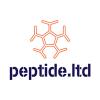A showdown of epic proportions...LLLT vs. Pulsating Magnetic Field Therapy for lower back osteoarthritis. Looks like a draw!
Ok, I don't know how applicable this is for us but I thought it was interesting in light of recent experiments. =)
http://www.ncbi.nlm....pubmed/25763584
Pol Merkur Lekarski. 2015 Jan 25;38(223):26-31.
[Comparison of the effect of laser and magnetic therapy for pain level and the range of motion of the spine of people with osteoarthritis lower back].[Article in Polish]AbstractIncreased expression of degenerative disease of the lumbar spine is an onerous task, which reduces the efficiency of the activity and life of many populations. It is the most common cause of medical visits. In 95% of cases the cause of complaints is a destructive process in the course of degenerative intervertebral disc called a lumbar disc herniation. Protrusion of the nucleus pulposus causes severe pain and impaired muscle tone, often more chronic and difficult to master. Successful treatment of lumbar disc herniation constitutes a serious interdisciplinary problem. It is important to properly planned and carried out physiotherapy. Based on the number of non-invasive methods, to reduce muscle tension, mute pain and alleviation of inflammation. It is the treatment safe, effective, and at the same time, which is their big advantage, readily available and cheap. It is worth noting that not every method has the same efficiency. The question that the methods are effective in relieving pain and helping to effectively increase the range of motion led to a comparison of two methods - Low Level Laser Therapy (LLLT) and pulsating magnetic field therapy.
AIM:The aim of the study was to compare the efficacy of LLLT and pulsating magnetic field therapy in combating pain and increase range of motion of the spine of people with degenerative spine disease of the lower back.
MATERIALS AND METHODS:120 patients with diagnose lumbar disc herniation whit no nerve roots symptoms. Patients were divided into two Groups: A and B. Group A of 60 patients were subjected to laser therapy (λ=820nm, P=400mW, Ed=6-12 J/cm²) and the second Group B of 60 patients too, to pulsating magnetic fields procedures (5mT, 30 Hz, 15 minutes). Every patient before rehabilitation started and right after it has finished has undergone examination. Subjective pain assessment was carried out using a modified Laitinen questionnaire and Visual Analogue Scale of Pain intensity. Spine mobility was evaluated whit the Schober test and the Fingertip-to-floor-test. The obtained results were subjects to statistical analysis.
RESULTS:Research shows that both low energy laser and pulsating magnetic field physical attributes are effective methods for the treatment of pain and restricted mobility of the spine caused by disc herniation. Careful analysis emphasizes greater efficiency laser for pain. In contrast, a statistically greater improvement in global mobility of the spine, as well as flexion and extension of the lumbar recorded in group B, where the applied pulsating magnetic field.
CONCLUSIONS:Both laser and magnet therapy reduces pain and improves mobility of the spine of people with degenerative spine disease of the lower back. Comparison of the effectiveness of both methods showed a greater analgesic effect of laser treatment, and greater mobility of the spine was observed under the influence of pulsating magnetic field therapy.
:O This could be really good for my mother's osteoarthritis... This is the next level on healing technologies... For the first time in my life I'm feeling the recent advancement in technology fairly close and with an easy access ![]() .... but ironically, this technology like LLLT isn't new.
.... but ironically, this technology like LLLT isn't new.
I think that LLLT+ICES can be applied in synergistic way, first LLLT for the ATP generation and the hormetic response, and then ICES for the anti-inflammatory effects. I think that LLLT could be bad if you have too much HIF-1alpha and VEGF and a bad response for counteract NF-kB... so ICES could enhance the body stress response.
The other idea that comes to my mind is the stem cell process behind these technologies, LLLT enhances stem cells and ICES interacts with stem cells also. Probably there are some risks with doing these two technologies, but the positive effects apparently can be much greater than the risks...
Effect of low-level laser therapy on mesenchymal stem cell proliferation: a systematic review.
Low-level laser therapy (LLLT) has been used in several in vitro experiments in order to stimulate cell proliferation. Cells such as fibroblasts, keratinocytes, lymphocytes, and osteoblasts have shown increased proliferation when submitted to laser irradiation, although little is known about the effects of LLLT on stem cells. This study aims to assess, through a systematic literature review, the effects of LLLT on the in vitro proliferation of mesenchymal stem cells. Using six different terms, we conducted an electronic search in PubMed/Medline database for articles published in the last twelve years. From 463 references obtained, only 19 papers met the search criteria and were included in this review. The analysis of the papers showed a concentration of experiments using LLLT on stem cells derived from bone marrow, dental pulp, periodontal ligament, and adipose tissue. Several protocols were used to irradiate the cells, with variations on wavelength, power density, radiation time, and state of light polarization. Most studies demonstrated an increase in the proliferation rate of the irradiated cells. It can be concluded that the laser therapy positively influences the in vitro proliferation of stem cells studied, being necessary to carry out further experiments on other cell types and to uniform the methodological designs.
Just a comment: In the past the veins of my hands were always thin, it could hardly be noticed... but after LLLT the veins of my hands are bigger and with a clearly vassodilatory appearance, I can see the veins most of the time.... This is good or this is bad? I don't know.
Edited by BieraK, 25 March 2015 - 01:07 PM.






















































